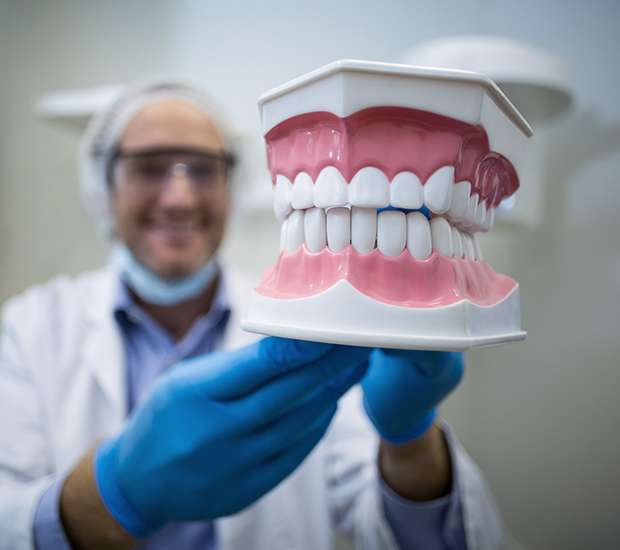Wearing dentures that fit poorly can lead to a number of serious issues that can significantly affect a patient’s quality of life. Thankfully, there are different types of repairs that can be carried out on dentures to improve their fit. One of them is denture rebasing. Keep reading to see what you can expect from a denture rebasing procedure.
What is Denture Rebasing?
Denture rebasing is a type of denture repair that involves replacing the entire base material of a denture with the goal of improving its stability. This type of repair is often required when dentures begin to reach the end of their lifespan or have become cracked and poor-fitting.says this professional dentist in Fort Lauderdale.
When Should Denture Rebasing be Done?
After wearing a particular set of dentures for over 5 years, you might notice that the bone ridges of your gums have receded and are now making your dentures fit poorly and shift while also causing discomfort and pain. When this happens, denture rebasing should be carried out to replace the entire base of the denture and create better stability. Denture rebasing should be done every 5-7 years, especially if the teeth are still in good condition. Other situations that call for denture rebasing include; a broken or damaged denture, a weak acrylic base or a change from temporary dentures to more permanent ones.
The Procedure
During a denture rebasing procedure, your denturist starts off by creating a cast for your new dentures. To do this, your denturist will take an impression of your current denture by asking you to bite down on a mould or semi-rigid material. This mould will capture details like the spacing and positioning of teeth in your mouth (the cast used for the new denture will be moulded off this impression) that will be used later on. This is a fairly simple and painless step in the rebasing process.
Once the cast is created, the next step is to measure and replace it. This part is carried out in the lab. During this step, the denture technician makes an occlusal and incisal index of the teeth’s position. This is to ensure that the artificial teeth from your old denture base are repositioned in the exact same orientation in this new base. Sticky denture repair glue is then used to carefully attach the teeth from your previous set of dentures to the cast that will be used for the new base.
After the teeth are held in place to the cast, the next step is flasking and processing. This involves removing any denture repair glue residue and using the cast to form the sectional mould that will be used in the new base. The final step is for the technician to confirm the alignment of the mould by mounting the dentures on an articulator (which is a replica model of the patient’s mouth and jaw). This final step verifies the positioning and fit of the dentures before they are returned to the patient. Effective denture care is crucial to prevent any future issues and ensure a comfortable experience for the wearer.
How Long Does Denture Rebasing Take?
The entire rebasing procedure occurs fairly quickly, so it shouldn’t take more than a few days to get your dentures back to you. Some denture specialists (such as The Denture Shop) can even get your dentures back to you within a day.
Conclusion:
Denture rebasing is a type of denture repair that can improve the stability, fit and appearance of your dentures. They should be carried out every 5 years, especially on dentures that have gone through serious wear and tear, as the process can also add to the lifespan of dentures.

